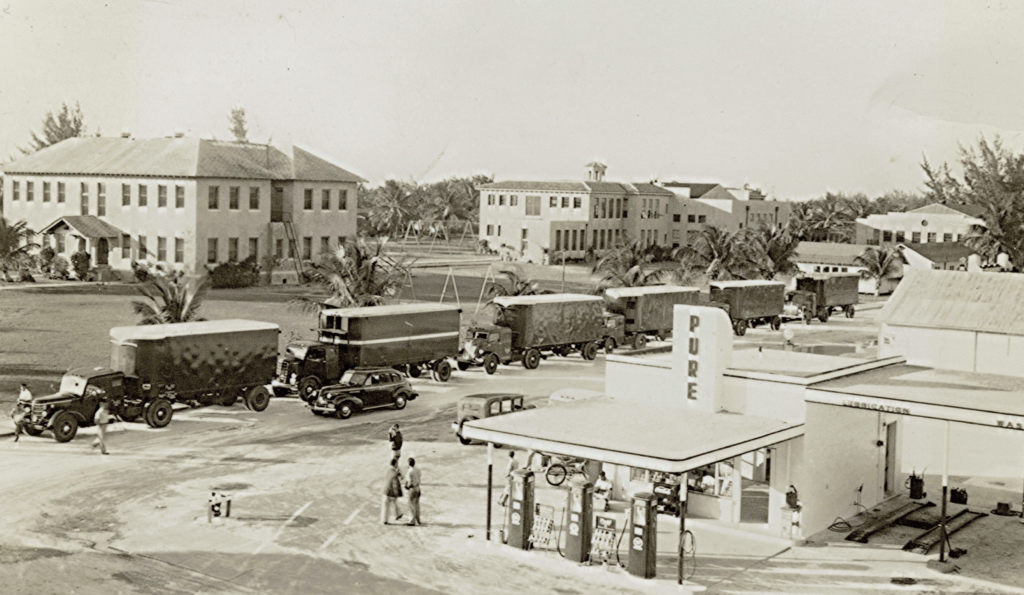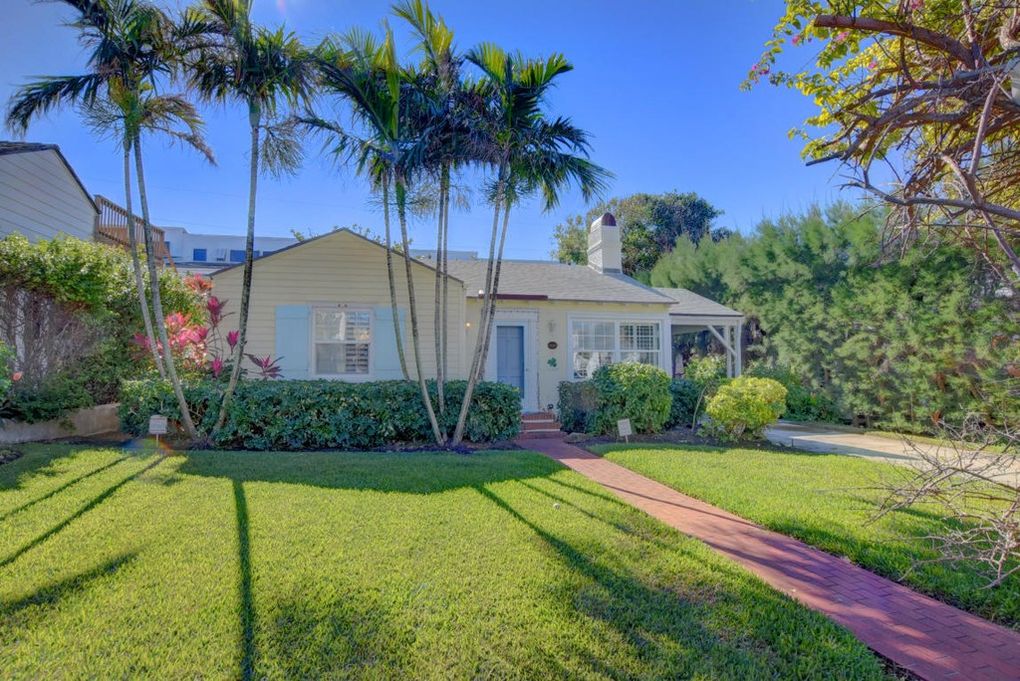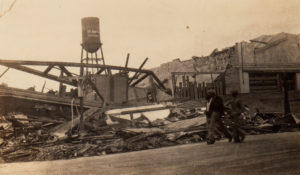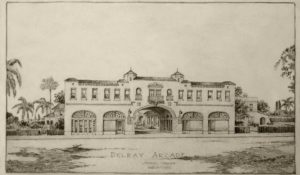In 1987, the City of Delray Beach, working with the Delray Beach Historical Society and a group of volunteer citizens, established four historic districts. These actions set Delray Beach on the path of improving old neighborhoods and preserving structures built before 1940. In 1997 an additional district was formed —the West Settlers’ District.
Historic districts showcase the importance of preservation and community history. Safeguarding our history promotes civic engagement and provides a sense of place. These districts are an important piece of continuing our legacy for future generations.

Did you know that Historic Preservation helps bring an additional $6.3 billion a year to the Florida economy? Researchers at the Center for Government Responsibility focused on several key areas relative to historic preservation such as historic rehabilitation, heritage tourism and museum operations. The study suggests that historic preservation produces a large return for the public money invested and is one of the most efficient ways public funds can be invested.
This report is evidence that investing in the protection of historic places, and the legacy of cultures that create them, produces positive and measurable results both directly and indirectly for the local economy. In a companion study researchers looked at how Floridians quality of life is impacted by historic preservation. Findings reveal that historic preservation enhances the quality of life through economic and cultural contributions.
Historic preservation, at the local level, involves more than rehabilitating historic structures and sites that are significant to the architecturally oriented preservationist. It also can encompass the events that take place in and around these structures, the traditions associated with an area and its structures, the perpetuation of arts and crafts that reflect a threatened way of life within an area, or the festivals celebrating the history of the people and the distinctive aspects of the locale. This broader concept of historic preservation creates the component parts of heritage tourism. Heritage tourism is an increasingly important part of Florida’s tourism industry. *
Old School Square Historic Arts District
Situated in the original geographic center of town, the Old School Square Historic Arts District is Delray Beach’s largest. It features 176 structures, 101 of those at least 50 years old. The district provides the original footprint for the settlement and development of the town. Every Pre-World War I and II vernacular architectural style in the city can be found here. The Old School Square Historic District is proof that adaptive reuse of historic buildings increases the economic feasibility of restoring many of the town’s most significant buildings.
Architectural styles here include frame vernacular (45% of the buildings in the district are built in this style), masonry vernacular (about 21%), craftsman style bungalows (8.33% of buildings), mission (6.25%) and Mediterranean Revival (5.56%), dating from 1902 to 1945. The district includes famed Banker’s Row with boundaries that expand south to SE 2nd Street and north to NE 4th Street with NW and NE 1st Avenues making up the west and east boundaries. Notable buildings: Delray Beach Center for the Arts at Old School Square, Cathcart House, 38 S. Swinton Ave., St. Paul’s Episcopal Church, 188 S. Swinton Ave., Sundy House, 106 S. Swinton Ave.

West Settlers District
Originally called “the Sands,” so named for its sandy soil, the West Settlers Historic District is the site of the first African-American settlement in Delray Beach, established in 1894. African-Americans from northern and western Florida, Georgia, and South Carolina were the first non-native settlers in the Delray area pioneering a rich agricultural heritage. Dating back to 1905, many frame vernacular styles abound in the area as early settlers utilized both local materials and their own knowledge of construction to develop the built environment. Styles include Bungalow and Mission-Revival architecture popularized in the 1920s. Educational and religious institutions were important in the early days of the neighborhood. A school, three churches, and a Masonic Lodge were all established within the West Settlers Historic District between 1895 and 1920. The district was home to a thriving commercial street during segregation days. West Settler’s was listed on the Delray Beach Local Register of Historic Places in 1997.
Notable buildings: Spady Cultural Heritage Museum, La France Hotel, Williams Cottage, Mount Olive Baptist Church

Del-Ida Park Historic District
This residential neighborhood of Mediterranean Revival style and Craftsman Bungalow designs was platted in 1923 as one of Delray’s first planned developments. The district features a unique, diagonal street pattern with curvilinear corners creating triangular blocks with pie-shaped parks and varying street frontages. Architectural styles throughout the neighborhood reflect the popular culture of South Florida and the land boom and bust that followed. Dating between the 1920s and the 1940s, Mediterranean and Mission-Revival styles are prevalent with detailed Bungalows, Craftsman Cottages, and Frame Vernacular dwellings also present.
The neighborhood lies between NE 4th Street and NE 8th Street with Swinton Avenue to the west and NE 3rd Avenue to the east. Del-Ida Park became a locally designated historic district in 1988.

Nassau Park Historic District
Nassau Park was the City’s first planned residential development south of Atlantic Avenue. It was intended to compliment the surrounding resorts and hotels along South Ocean Boulevard, and recalls the prosperity, pleasure, and style, which was the essence of the 1930s Delray Beach resort life. The scale, dimension, and proportion of these modest homes reflect a time when people with money did not want to flaunt it. The district is home to 17 one- and two-story cottages built in the Cape Cod Revival and Minimal Traditional styles, dating from 1935 to 1941. Distinctive horizontal clapboard siding, multi-paned windows and elaborate doorways define these classic cottages.
Originally Jo-Jo Avenue, Nassau Street was renamed by developer R.C. MacNeil who commissioned architect Samuel Ogren, Sr. to design the first house in 1935. District boundaries include the two-block area of Nassau Street between Venetian Drive to the west and South Ocean Boulevard to the east.
Nassau Park was listed as a local historic district in 1988.

Marina Historic District
Situated on the Intracoastal Waterway and built around the town’s City Marina, the district displays a variety of architectural styles blending into a lush sub-tropical landscape. The district displays various architectural styles ranging from Mediterranean and Mission Revival to Monterrey, Florida Cottages, and Art Moderne, most constructed between 1922 and 1943. With its narrow and shaded streets and the city marina as a focal point, this is the town’s most pedestrian-friendly neighborhood.
The area was home to many prominent seasonal residents who enjoyed its close proximity to the ocean and the Intracoastal Waterway. The buildings highlight the designs of prominent architects of the day including Gustav Maas, Sam Ogren, Sr., and John Volk.
The Marina District is bounded by East Atlantic Avenue to the north, SE 4th Street to the south, SE 7th Avenue to the west and the Intracoastal Waterway to the east. It was designated a historic district in the Local Register of Historic Places in 1988.
Notable buildings: The Anchorage, The Boyd Building on East Atlantic Avenue, Christian Science Church, 200 SE 7th Ave.

*Economic Impacts of Historic Preservation in Florida, Center for Governmental Responsibility, University of Florida Levin College of Law; Contributions of Historic Preservation to the quality of life in Florida, Center for Governmental Responsibility, University of Florida Levin College of Law, Center for Urban Policy Research, Florida Trust for Historic Preservation.
For research inquiries or more information on Delray Beach history, contact our Archivist, Kayleigh Howald. 561.274.9578. [email protected]



